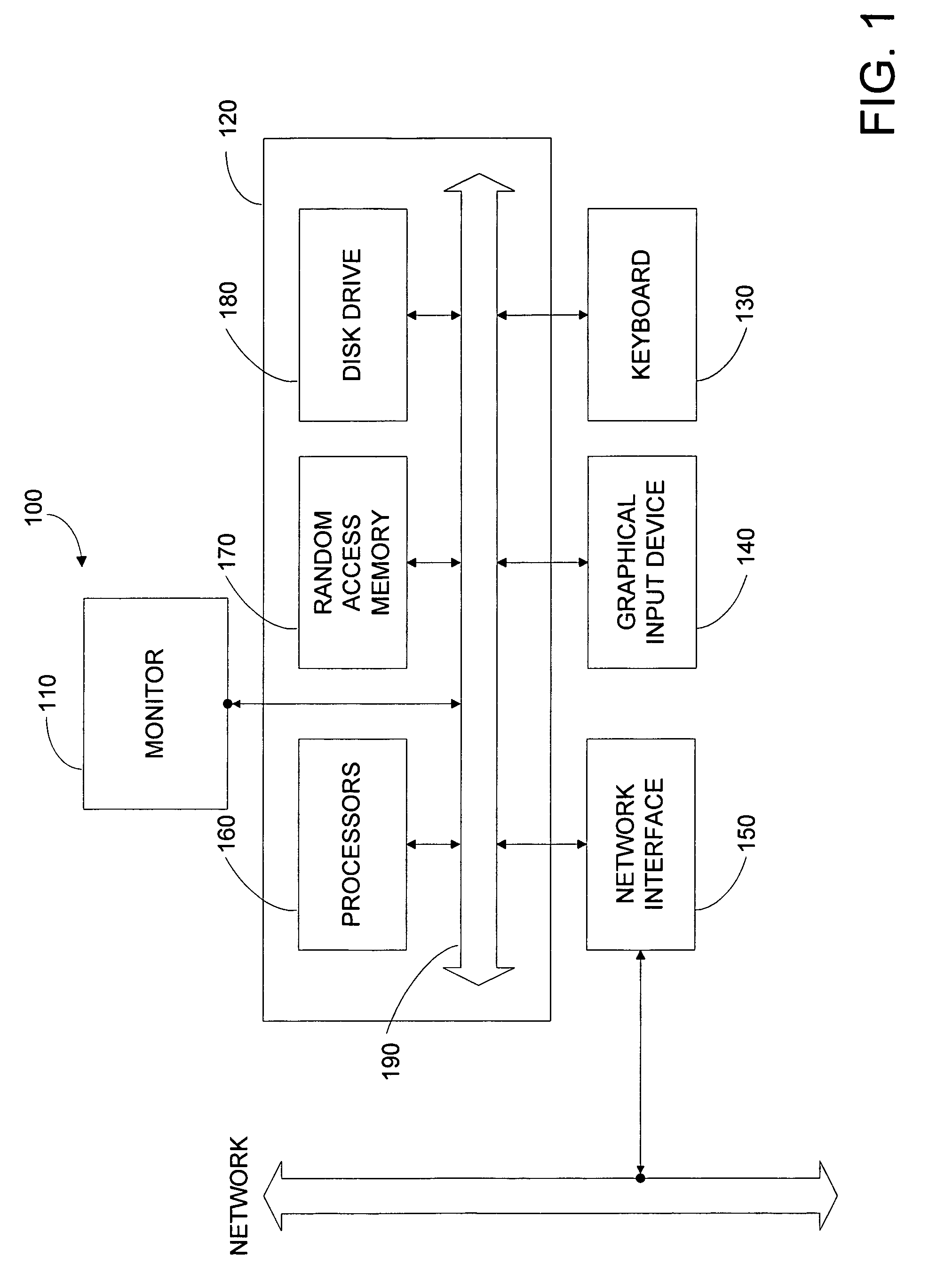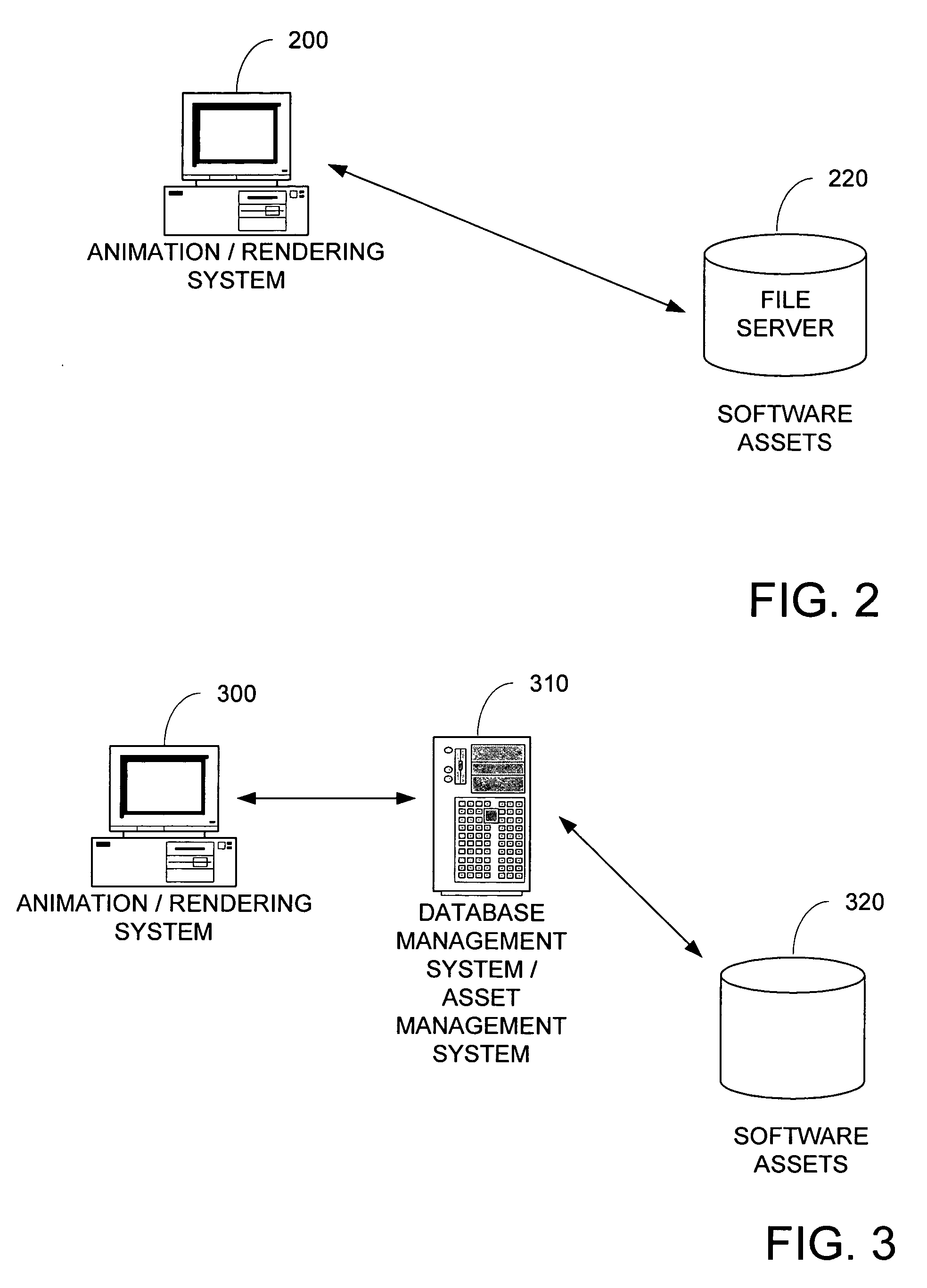Automatic pre-render pinning of change isolated assets methods and apparatus
a technology of change isolated assets and pre-rendering, applied in the field of automatic pre-rendering, can solve the problems of rendering engine to terminate early with an error, process typically takes a substantial period of time, visual discontinuity, etc., and achieve the effect of reducing visual inconsistencies in a scene and less disk spa
- Summary
- Abstract
- Description
- Claims
- Application Information
AI Technical Summary
Benefits of technology
Problems solved by technology
Method used
Image
Examples
Embodiment Construction
[0028]FIG. 1 is a block diagram of typical computer system 100 according to an embodiment of the present invention.
[0029]In the present embodiment, computer system 100 typically includes a monitor 110, computer 120, a keyboard 130, a user input device 140, a network interface 150, and the like.
[0030]In the present embodiment, user input device 140 is typically embodied as a computer mouse, a trackball, a track pad, wireless remote, and the like. User input device 140 typically allows a user to select objects, icons, text, control points and the like that appear on the monitor 110. In some embodiments, monitor 110 and user input device 140 may be integrated, such as with a touch screen display or pen based display such as a Cintiq marketed by Wacom.
[0031]Embodiments of network interface 150 typically include an Ethernet card, a modem (telephone, satellite, cable, ISDN), (asynchronous) digital subscriber line (DSL) unit, and the like. Network interface 150 are typically coupled to a c...
PUM
 Login to View More
Login to View More Abstract
Description
Claims
Application Information
 Login to View More
Login to View More - R&D
- Intellectual Property
- Life Sciences
- Materials
- Tech Scout
- Unparalleled Data Quality
- Higher Quality Content
- 60% Fewer Hallucinations
Browse by: Latest US Patents, China's latest patents, Technical Efficacy Thesaurus, Application Domain, Technology Topic, Popular Technical Reports.
© 2025 PatSnap. All rights reserved.Legal|Privacy policy|Modern Slavery Act Transparency Statement|Sitemap|About US| Contact US: help@patsnap.com



